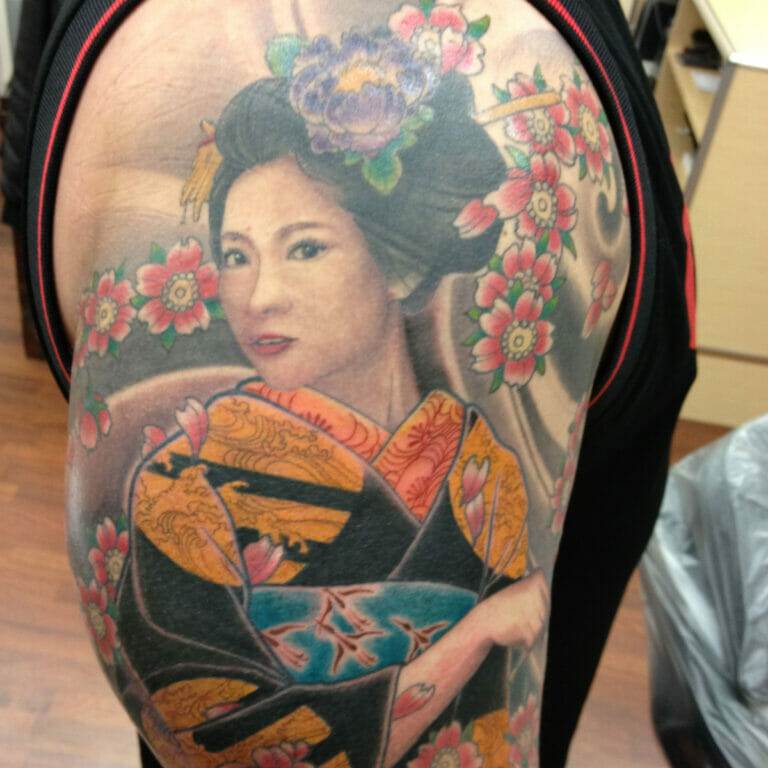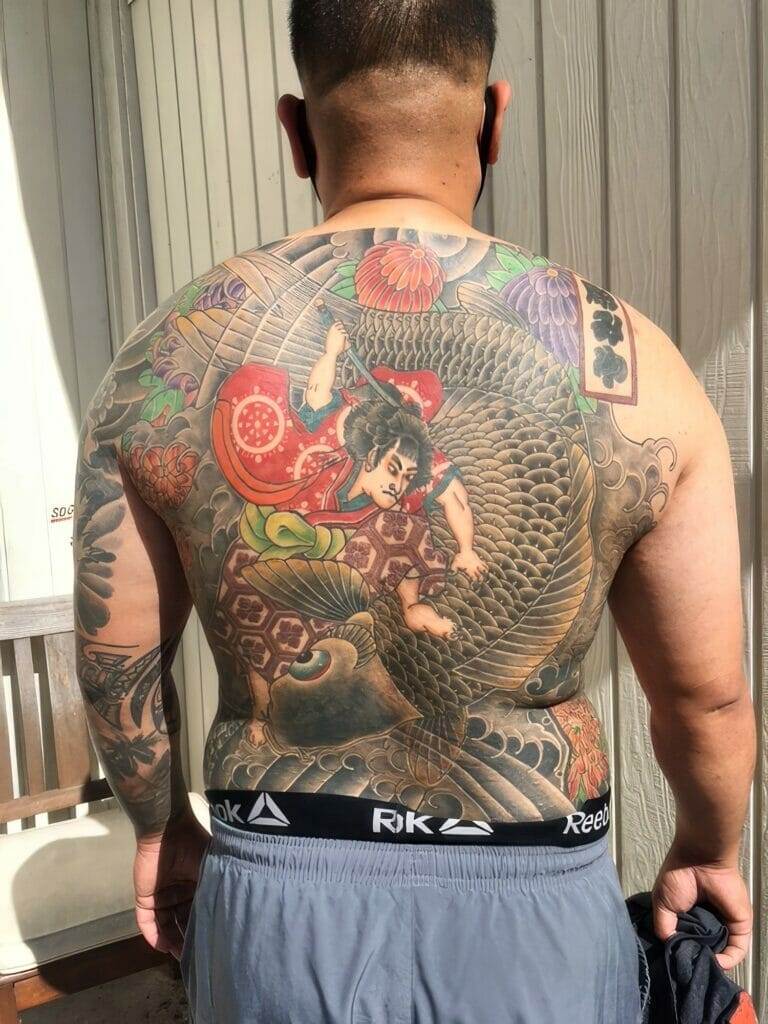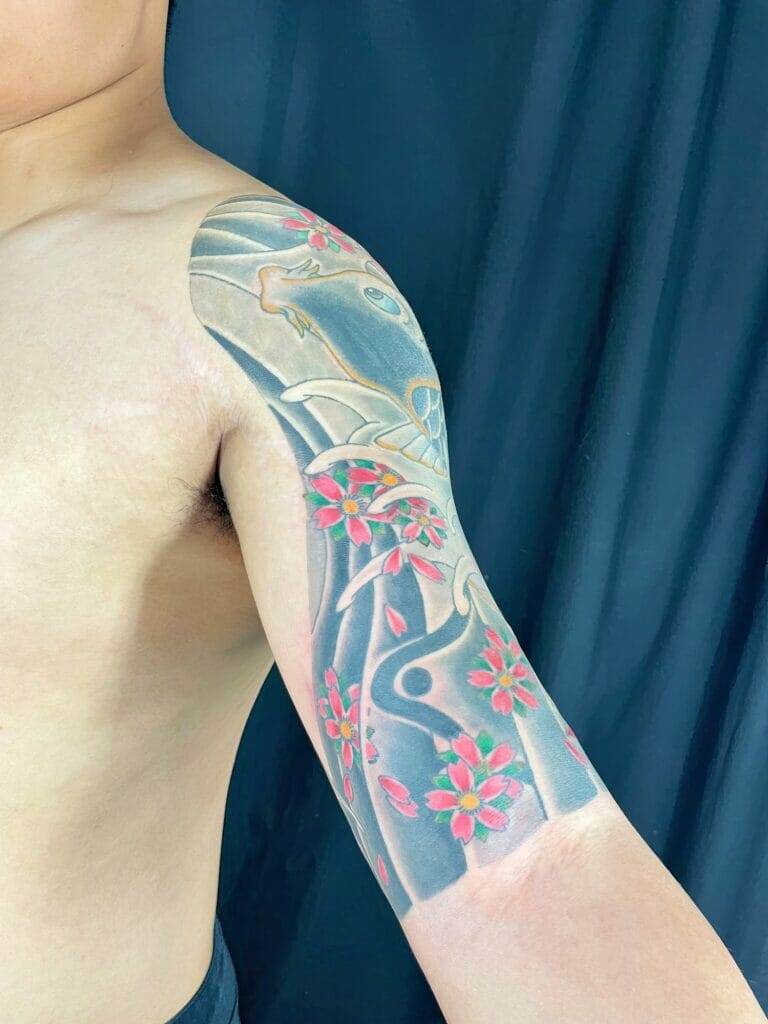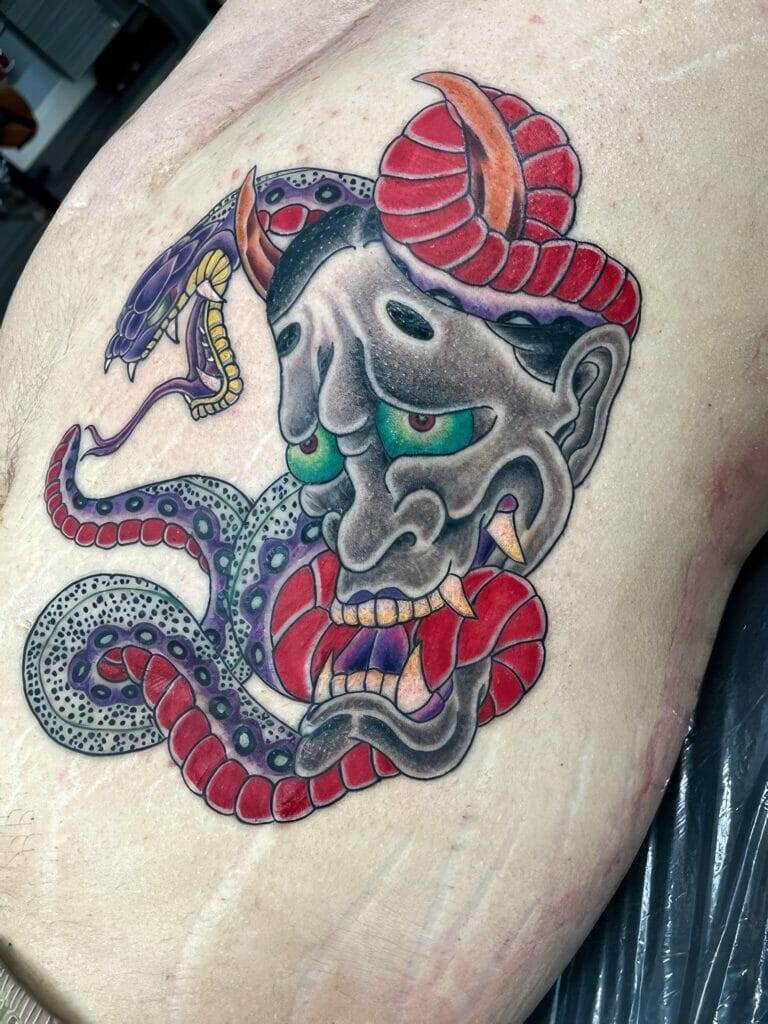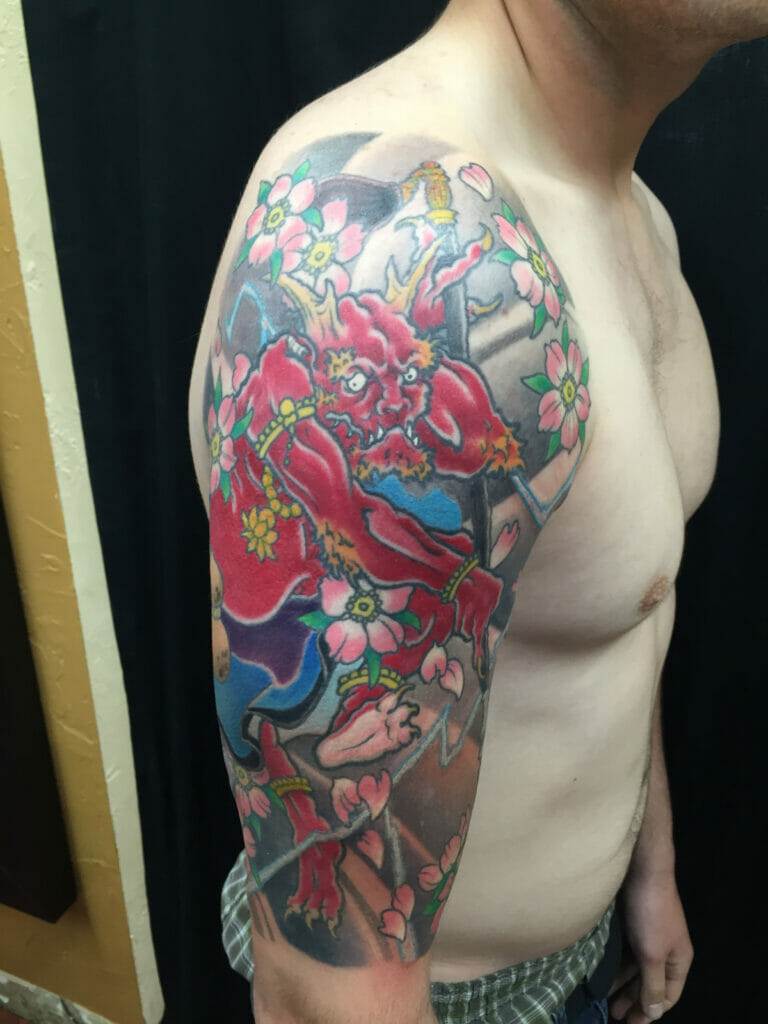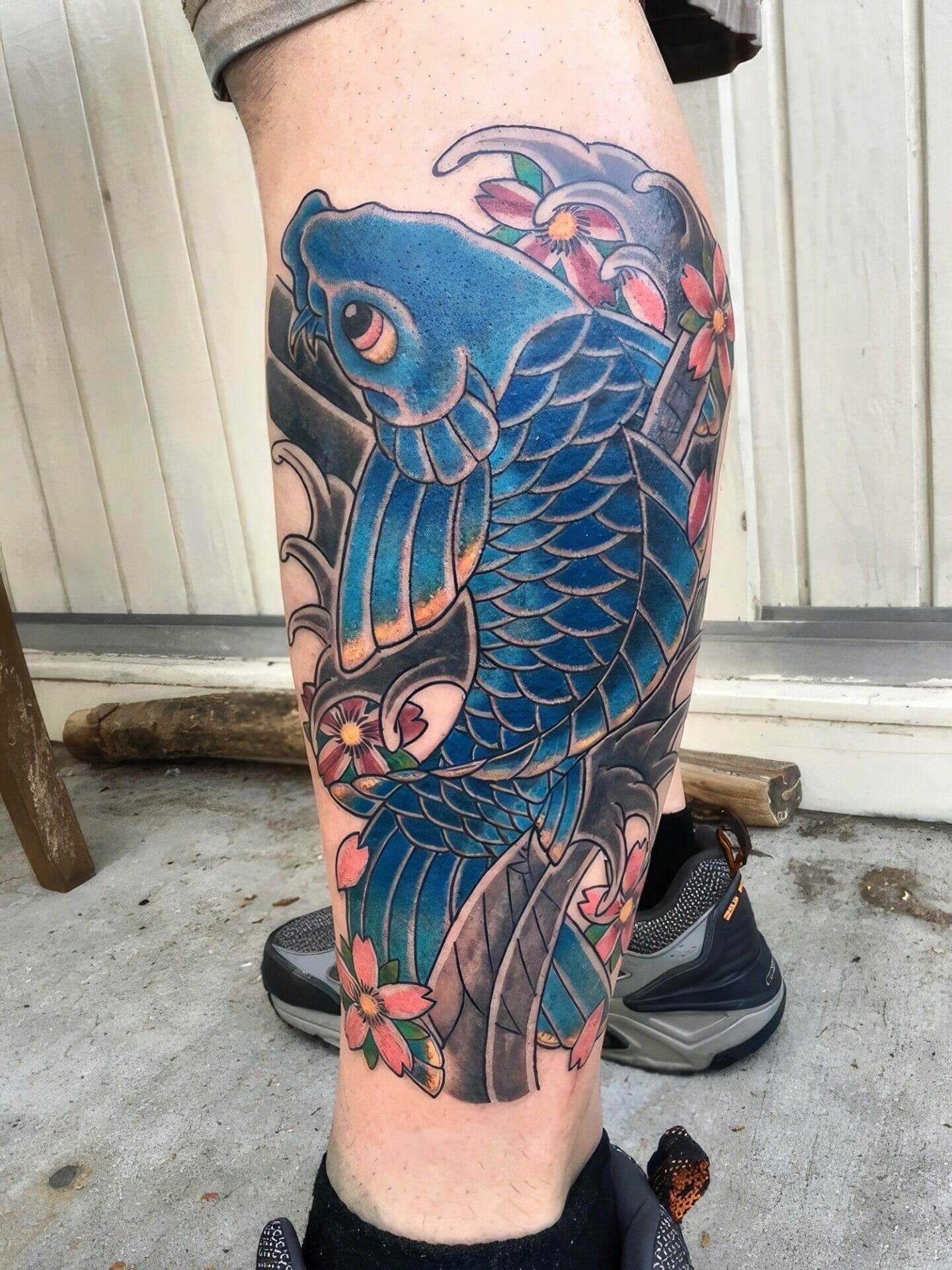
Japanese tattoo designs have a rich history and deep cultural significance. Dating back thousands of years, these designs have evolved and become an integral part of Japanese culture. The art of tattooing in Japan has its roots in ancient times, where it was used as a form of punishment and identification for criminals. Over time, however, tattoos became more accepted and began to be seen as a form of self-expression and art.
Japanese tattoo designs are known for their intricate details, vibrant colors, and symbolic meanings. They often depict traditional Japanese motifs such as dragons, cherry blossoms, geishas, and samurais. These designs are not only visually stunning but also carry deep cultural and spiritual significance.
The History of Koi Fish in Japanese Culture
Koi fish have a long history in Japanese culture and are considered one of the most iconic symbols in Japanese art. The origins of koi fish can be traced back to China, where they were first bred for their vibrant colors. In Japan, koi fish were introduced during the 17th century and quickly gained popularity among the upper class.
In Japanese culture, koi fish are seen as a symbol of perseverance, strength, and determination. They are known for their ability to swim against strong currents and even jump over waterfalls. This resilience is often associated with the samurai spirit and is highly admired in Japanese society.
The Symbolism of Koi Fish in Japanese Tattoos
Koi fish tattoos are highly symbolic and carry various meanings depending on their design and placement on the body. One common interpretation is that koi fish represent overcoming adversity and achieving success. The image of a koi fish swimming upstream is often used to symbolize perseverance in the face of challenges.
Another popular symbolism associated with koi fish tattoos is love and romance. In Japanese folklore, it is believed that if a koi fish is able to swim up a waterfall, it will transform into a dragon. This transformation is seen as a metaphor for love and transformation.
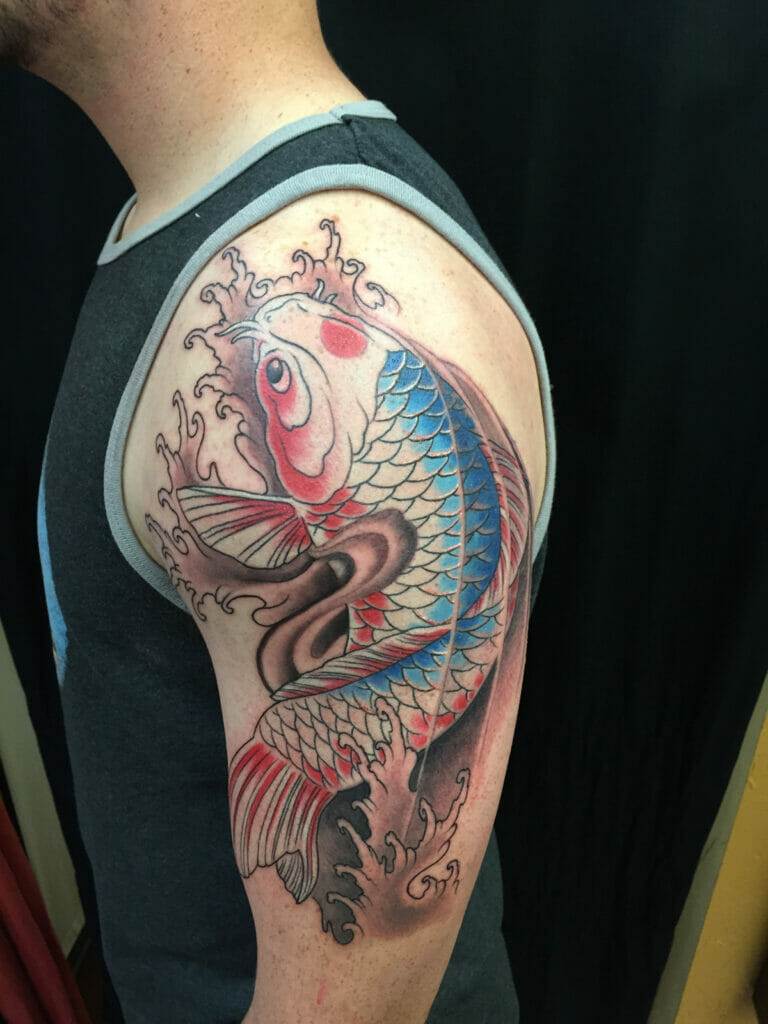
The Different Colors of Koi Fish and their Meanings
Koi fish come in a variety of colors, each with its own symbolic meaning in Japanese culture. The most common colors of koi fish are red, black, yellow, blue, and white.
Red koi fish symbolize love and passion. They are often associated with strong emotions and intense feelings.
Black koi fish represent overcoming obstacles and are often seen as a symbol of strength and resilience.
Yellow koi fish are associated with wealth and prosperity. They are believed to bring good luck and financial success.
Blue koi fish symbolize tranquility and serenity. They are often associated with calmness and inner peace.
White koi fish are seen as a symbol of purity and spirituality. They are often associated with enlightenment and spiritual growth.
These different colors of koi fish are often incorporated into koi fish tattoos to convey specific meanings and emotions.
Oni Masks in Japanese Folklore and Mythology
Oni masks have a long history in Japanese folklore and mythology. In Japanese culture, oni are supernatural creatures that are often depicted as demons or ogres. They are believed to be powerful beings that possess both good and evil qualities.
In Japanese folklore, oni masks were used to ward off evil spirits and protect against misfortune. They were often worn during festivals and ceremonies to bring good luck and drive away evil forces.
Oni Masks in Japanese Tattoo Designs

Oni masks are a popular motif in Japanese tattoo designs. They are often depicted as fierce and menacing creatures with sharp teeth, horns, and bulging eyes. These tattoos can be highly detailed and visually striking, capturing the essence of the oni’s power and strength.
There are different styles of oni masks used in tattoos, each with its own unique characteristics. Some oni masks are more traditional and resemble the masks used in Japanese theater, while others are more modern and stylized.
The Symbolism of Oni Masks in Japanese Tattoos
Oni mask tattoos carry various symbolic meanings depending on their design and placement on the body. One common interpretation is that oni masks represent protection and strength. They are often seen as guardians that ward off evil spirits and protect the wearer from harm.
Another symbolism associated with oni mask tattoos is transformation and personal growth. Just like the oni themselves, these tattoos can represent the duality of human nature and the potential for change and self-improvement.
The Different Types of Oni Masks and their Meanings
There are different types of oni masks in Japanese culture, each with its own unique characteristics and meanings. The most common types of oni masks include the Hannya mask, the Onibaba mask, and the Shikami mask.
The Hannya mask is one of the most popular types of oni masks in Japanese tattoo designs. It represents a jealous and vengeful female demon. This mask is often associated with love and betrayal, symbolizing the destructive power of unrequited love.
The Onibaba mask represents an old woman demon. It is often depicted as a wrinkled face with wild hair and sharp teeth. This mask is associated with greed and deceit, symbolizing the dangers of materialism and selfishness.
The Shikami mask represents a demon with multiple faces. It is often depicted as a grotesque creature with multiple eyes and mouths. This mask is associated with chaos and madness, symbolizing the destructive power of unchecked desires.
Combining Koi Fish and Oni Masks in Japanese Tattoos
It is not uncommon to see koi fish and oni masks combined in Japanese tattoo designs. These combinations can carry deep symbolic meanings and tell a story.
One common interpretation of this combination is the struggle between good and evil. The koi fish represents purity and enlightenment, while the oni mask represents darkness and chaos. This tattoo can symbolize the constant battle between these opposing forces and the need to find balance in life.
Another interpretation is the transformation and personal growth. The koi fish represents perseverance and overcoming adversity, while the oni mask represents the potential for change and self-improvement. This tattoo can symbolize the journey of personal transformation and the ability to rise above one’s circumstances.
The Significance of Japanese Tattoo Designs in Modern Society
Japanese tattoo designs continue to be popular in modern society, both in Japan and around the world. They have evolved over time and have become a form of self-expression and art.
In Japan, tattoos are still associated with criminal activity and are often stigmatized. However, there is a growing acceptance and appreciation for tattoos as a form of art. Many young people in Japan are getting tattoos as a way to express their individuality and rebel against societal norms.
In Western countries, Japanese tattoo designs have gained popularity among tattoo enthusiasts. They are admired for their intricate details, vibrant colors, and deep symbolism. Many people choose Japanese tattoo designs as a way to connect with Japanese culture or to express their love for Japanese art.
In conclusion, Japanese tattoo designs have a rich history and deep cultural significance. They are known for their intricate details, vibrant colors, and symbolic meanings. Koi fish and oni masks are two popular motifs in Japanese tattoo designs, each with its own unique symbolism and meanings. These tattoos continue to be popular in modern society, both in Japan and around the world, as a form of self-expression and art.
If you’re fascinated by the symbolism behind Japanese tattoo designs like Koi Fish and Oni Masks, you’ll definitely want to check out this article from Funhouse Guesthouse in San Diego. “Decoding the Art of Tattooing: Funhouse Guesthouse Interprets How Tattoos Work” dives deep into the meaning and significance of these intricate designs. From exploring the historical context to understanding the cultural references, this article is a must-read for anyone interested in Japanese tattoo art. Read more

